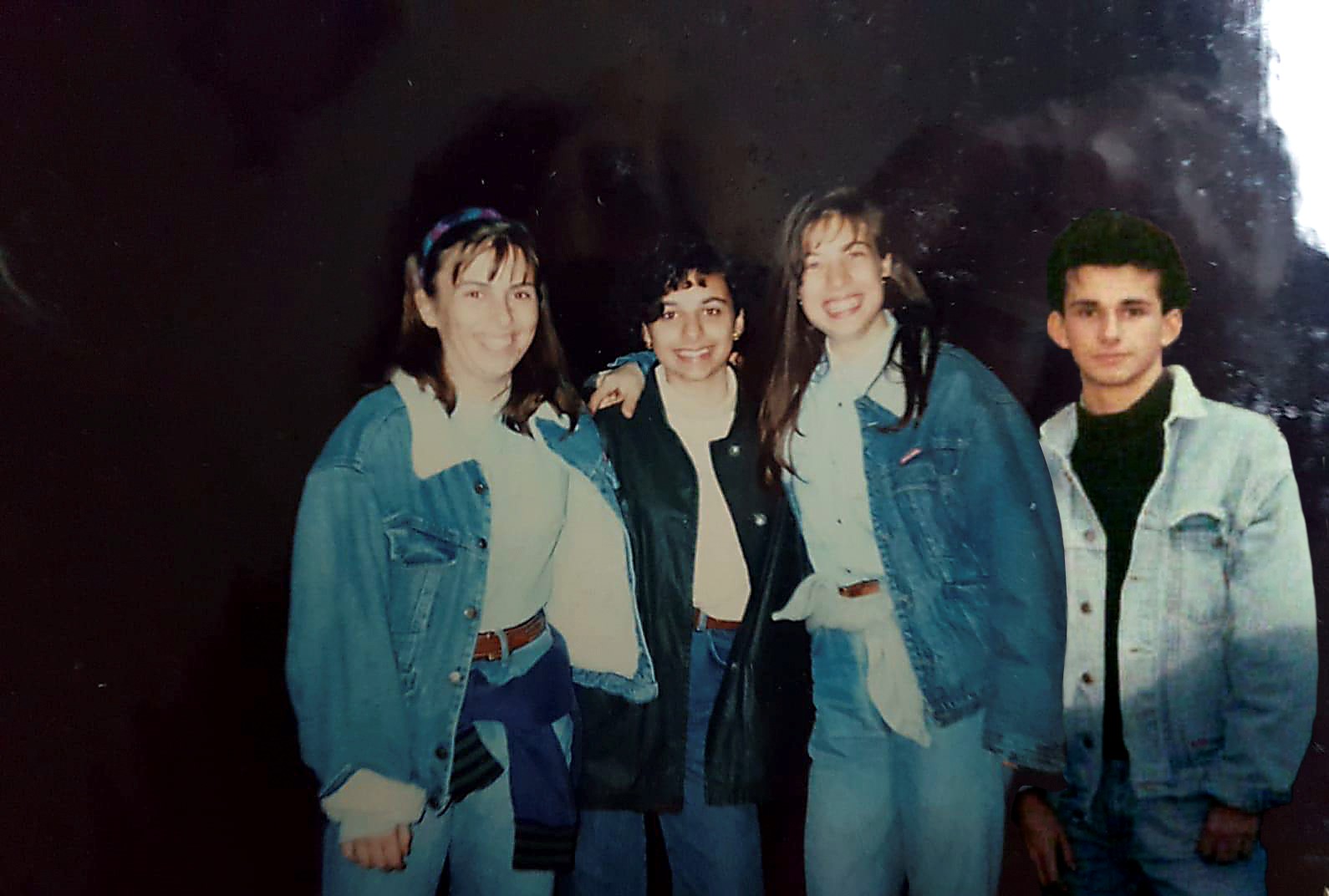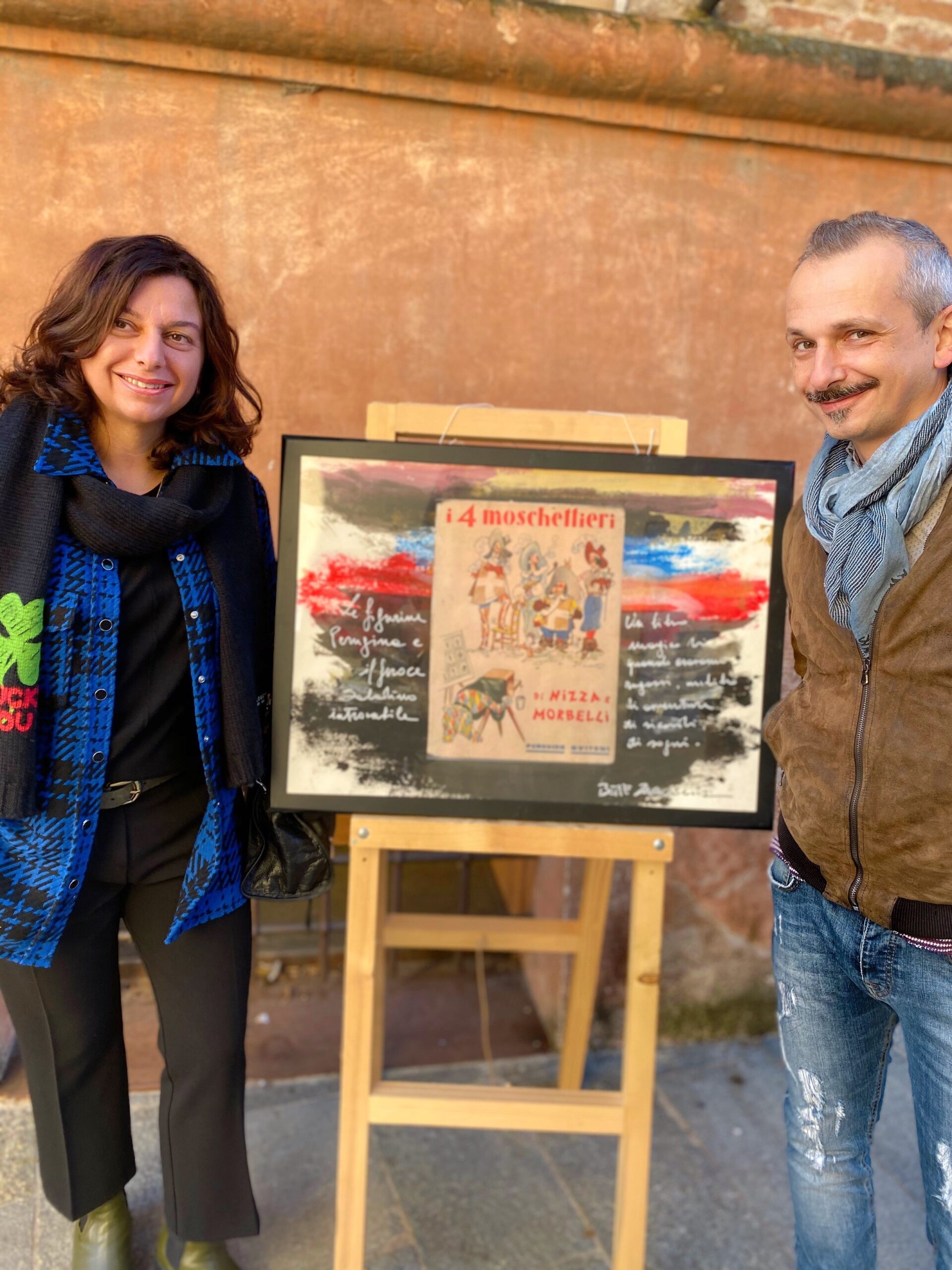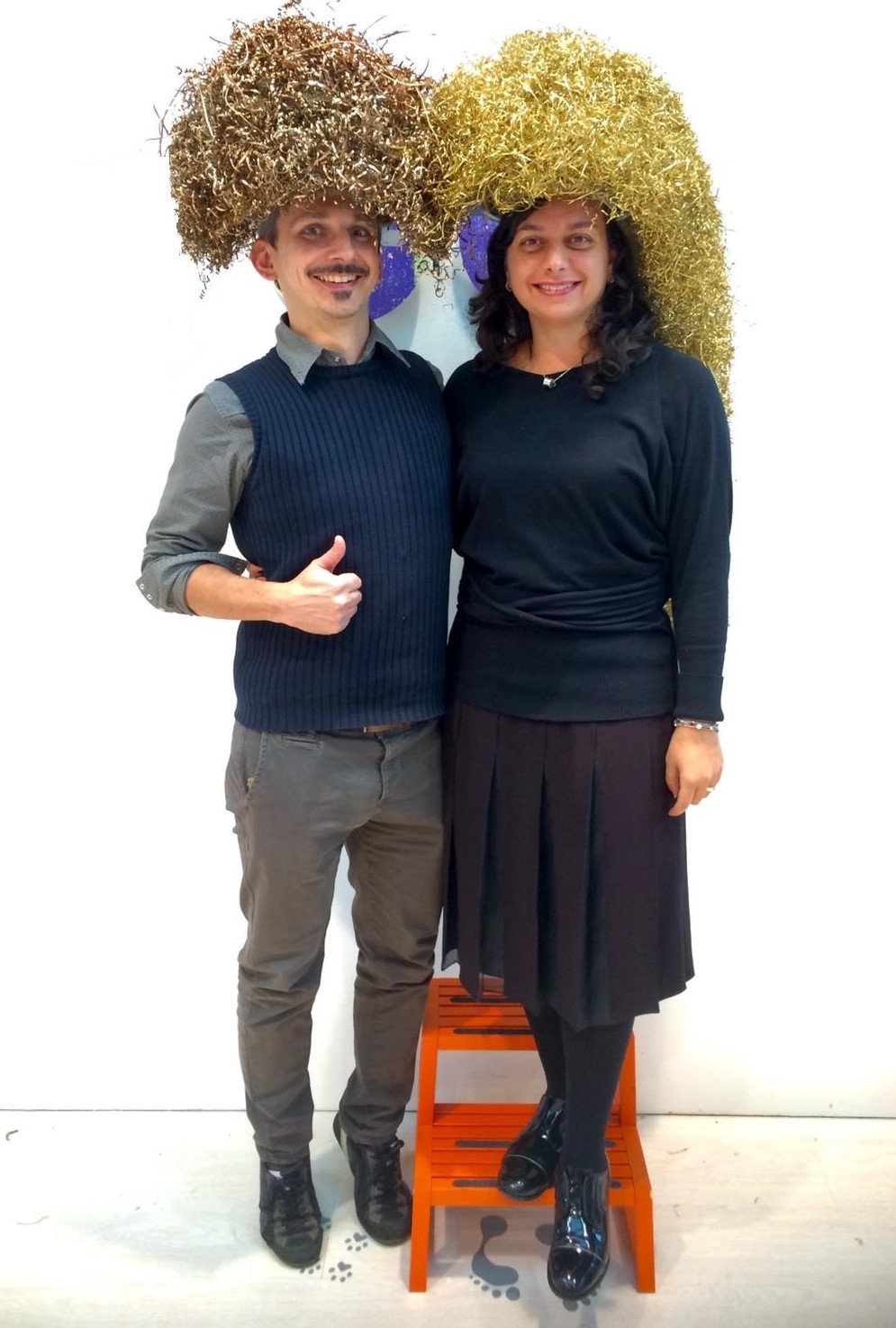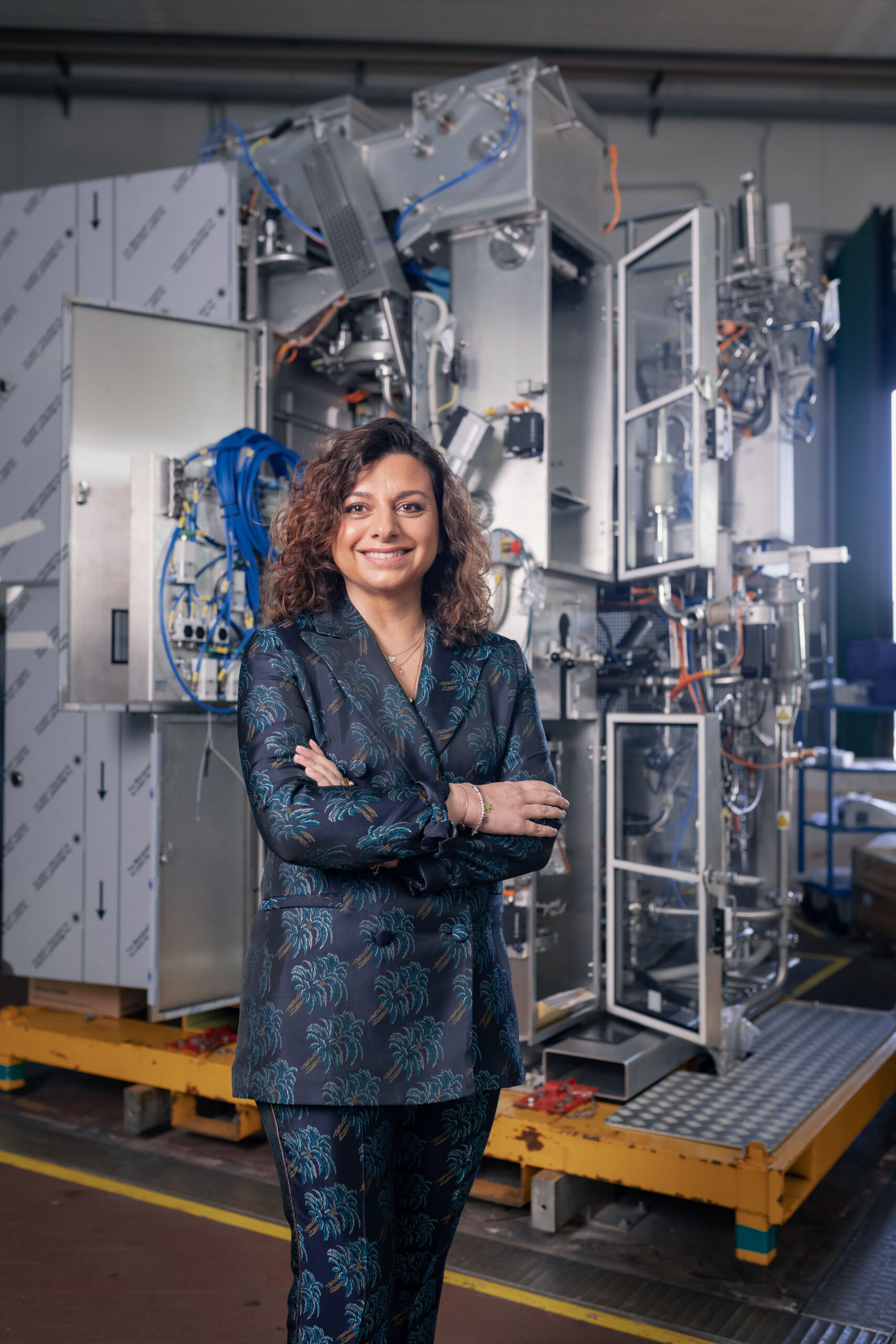
There are different kinds of friendship.
Someone is lucky enough to meet true friendship in life: it’s a delicate, precious, modest and silent feeling that never makes you feel alone, it envelops your soul and it warms your heart.
I am one of those lucky people, I crossed friendship on my way, and I can no longer do without it.
Fabrizio and I met for the first time at the Middle School: we were two shy, small and thin teenagers. He was already a nonconformist genius, with his cascade of wild black hair, on the contrary I was extremely serious and responsible with my short hair. He made sketches of caricatures of our teachers and classmates on his copybooks’ ripped sheets and he built paper frogs that we make jump on the desks between one lesson and another. I used to pass my homework to my friends because I was already an overachiever.
Still together, we grew up at Tassoni Scientific High School in Modena: again, we were two shy rubes catapulted into the city, protecting each other from older comrades’ jokes (even cruel ones).
Hours of study and lively debates shaped our minds and personalities in those five years.
“I Moschettieri” were born: Fabrizio and me, with two dear friends of us.
A compact group in which we all knew that we could always rely on each other. The University, that time separated but still in similar paths: Fabrizio enrolled at Engineering whereas I chose Mathematics. Parallel lives, respective families, different professional experiences.
And then again we found ourselves side by side at work: Fabrizio reveals himself to everyone, not just me, with his lively and brilliant mind, with his unscrupulous, brave, sometimes edgy personality. Thanks to both his training and his nature, Fabrizio represents the “Innovation”, with capital “I”.
His tendency to change is printed in his DNA in huge letters. He’s perfect for an interview about the topics that almost stifle us in this particular historical period: innovation, change, new frontiers of artificial intelligence. Words in freedom that we try to put in line with Fabrizio and give them content.

Fabrizio, let’s start with the basic question, what does “innovating” mean?
The simplest meaning of Innovating is “introducing new elements” and this seems to have become the main principle through which defending the competitiveness of our companies. Most times we imagine that the word “innovating” is related to a product or a technology, while innovation mainly refers to the problem you will solve or the need you will satisfy with that product or technology.
When should we start innovating?
Just right now, if we have not started yet.
How to innovate? Is it better to approach an incremental innovation or a disruptive-revolutionary one? This is a topic that was well developed by Clayton Christensen, the first who defined “disruptive innovation”, considered one of the most influential business ideas of the twenty-first century and that has most influenced the business of the last twenty years. Imagining that everything slowly changes will not help us to be smarter or to anticipate possible needs and therefore innovations: like Bertrand Russell’s dog, today as in 1912, receiving food every day from the man, it cannot imagine to be abandoned by the man himself. Personally, I believe that acting immediately is crucial, because sometimes, even fulfilling the whole task according to the standard, many companies cannot keep up and they don’t succeed.
Tell us your approach, what is your first step?
First you need to become aware of what a company is, what it does and the market in which it lives: most times it is not clearly specified, it is an analysis to be done, with self-criticism. We must be brave and challenge the reference pattern and the company’s best practices, it is also important to focus on strategic topics such as the attention to the customer. This will be the first step for unconventional thoughts and solutions to be applied to our product, our organization or our way of doing business. Paying attention to internal and external social scenarios, looking at things with a different eye, thinking “the other way around” will allow us to create ideas or perhaps discover a new market for our product or for our know-how.
And what about people? For those working within a company, it is often difficult to leave the idea “this has always been done in this way”!
It is necessary to immediately involve organizations in the process of innovation and change, because historically, by establishing standards, companies have tightened up their activities and make the entire innovation process difficult and expensive. This “questioning” is better if we combine a method of association that begins to connect what we observe: after asking ourselves the reason for things, observing people in different circumstances both internally (employees, managers, processes) and externally ( customers, suppliers, competitors, markets) to our organization, let’s look for associations.
Explain better, please.
By making associations, for example with Bob Eberle’s Scamper method or Zwicky’s morphological boxes, we will reveal anomalies or irregular combinations with respect to the standard, which could be potential seeds of organizational or commercial changes. Even the “new” ideas that will emerge as a solution to these anomalies need to be linked together: the action of “connecting dots” allows us to find a new coherence and gives us the bravery to proceed. Warning! We often wish to do everything on our own, to innovate and, above all, to innovate in a “revolutionary” way involves a high risk, so making mistakes and trying again is a process that can and must be shared.
And then? We have observed, we have produced ideas, we have allies, how do we proceed?
One more element generating opportunities, and also risk reduction, is never abandoning the traditional market exclusively in favour of revolutionary innovations. The best solution would be acting in parallel in two branches, or in two markets, making experiments. Experimenting, not being afraid of making mistakes, testing organizational, product or business prototypes, in a tireless search for the right actions to undertake. You inevitably notice how significant is the need to look for an intersection of ideas, people, systems, cultures and concepts: this is well described in “Effetto Medici”, the book by Frans Johansson, in which the author theorises the importance of intersections starting from the great Florentine de’ Medici family who, surrounding itself with the best artists and scientists, contributed to the flourishing of the Renaissance, one of the intersections par excellence, an era of great inventions and an extraordinary cultural development in Europe.
If innovation and intersection are so important, why don’t we all innovate? Or if we do, why don’t we all get what we are committed to?
The difference can also be identified by the context in which we work but the discrepancy is mainly provoked by us, by the daily choices, by the focus and energy we put joining all the possible dots of innovation.
A last question. How will the so-called artificial intelligence affect our way of living and working?
Artificial intelligence is a discipline that tends to ensure that hardware and / or software act and solve problems in a way that is completely indistinguishable from human beings and they can also learn from it. This idea of emulating human thinking and acting pushes contemporary scientists and philosophers to discuss the ethical aspects of this topic. It is not a coincidence that in 2017 Europe adopted an ethical code for artificial intelligence. Artificial intelligence will simplify our life, it will replace man for better or for worse, as it has already done for computing machines, software and robots. But in the end, or rather at the beginning, it is always the man who chooses. We distill and write the moral and behavioural values of our companies, let us remember them continuously, so that even artificial intelligence will have the opportunity to be an important resource rather than a potential risk. In conclusion, my recipe for an innovative company is this: making decisions and choices as soon as possible, growing people by training them in innovation and surrounding ourselves with people who have an inventive DNA. From the multiplicity and diversification of ideas and experiences, new seeds of creativity are born. This principle is able to guide innovators and companies to change.

Writer






